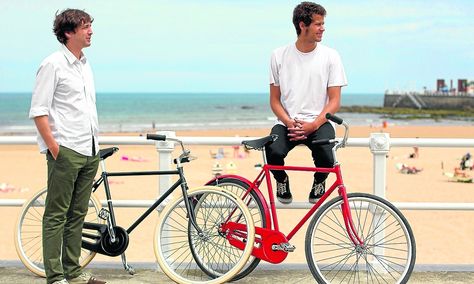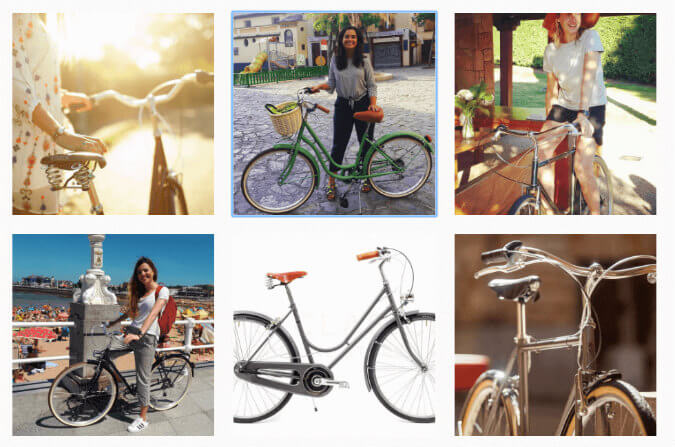With photo spreads in Vogue and sales topping $1 million, Biciclasica has come a long way from its humble beginnings as a vintage bike blog.
In 2010, a group of friends in Spain started the Biciclasica blog as a way to share their passion for vintage bicycles. They covered all things related to finding, riding, and loving old bicycles.
It wasn’t long before the friends realized that they weren’t alone in their hobby: There was a huge brand community seeking out information about vintage bikes online.

Spotting The Opportunity
Biciclasica readers had a common pain point: as much as they loved reading about collector’s bikes, it was seemingly impossible to buy them online.
Vintage bicycles were often only available directly from manufacturers who sold to small local retailers, rather than to individual enthusiasts.
The Biciclasica blog provided information on how readers could buy directly from the manufacturers, but it wasn’t a smooth process.
The manufacturers weren’t well-equipped to sell to the average consumer. There were logistical issues that made shipping expensive and slow, and frequently, the specific information important to collectors was not readily available.
From Blog to eCommerce Brand Community
Between the activity on the blog and the demand from readers, it wasn’t long before the team behind Biciclasica realized that they had built an online community dedicated to their content and hungry for a product.
As readers, the blog’s fans loved Biciclasica — but as consumers, they were seriously unsatisfied.
The Biciclasica team got to thinking: They were all vintage bicycle enthusiasts who also worked in the IT industry. They were in the unique position of having the knowledge to build and run an eCommerce site.
In other words, they were perfectly equipped to turn their blog into a brand.

But deciding to go from blog to brand was only the beginning of a long journey. In order to sell top-quality, old-school bicycles, they needed to find manufacturers who could create Biciclasica-branded bikes.
Co-founder Andrés Maldonado explains how they found their manufacturer match while staying true to their designs and sticking to their community’s price point:
According to Maldonado, the bicycle market has changed more dramatically in the last five years than it has in the last forty.
Bicycling for leisure was never as popular as it has been in recent years — and there definitely wasn’t a market for cycling lifestyle products.
The Importance of Customer Loyalty
Biciclasica has received plenty of press for its unique bikes, including regular features of its products in magazines like Elle and Vogue.
But now, classic bicycles have become more mainstream, and big brands are providing their own versions of vintage bikes.
Biciclasica differentiates itself by being a direct-to-consumer brand and putting an emphasis on collecting customer content and taking it seriously.
“From the beginning, we’ve really understood that listening to customers’ feedback and comments are vital.”
Building a Brand with Word of Mouth
Not only does customer feedback help Biciclasica improve their product, it also expands the conversation that began with the community of blog readers, creating the perfect environment for successful word-of-mouth marketing.
When they launched their store, the Biciclasica team didn’t need to worry about building an audience from scratch. They already had one. That existing audience also took some of the pressure off when it came to marketing.
“It didn’t make sense to start by thinking of how we would market the store. If you have a good product, the product will sell itself because your customers will spread the word. And we had a great product. ”
They’ve continued to put their content first, with an in-house photography studio and video production team. But on their Instagram and in their photo galleries, they also include customer photos alongside their professional eCommerce brand content. With such an active community, it made sense to let their enthusiastic customers speak for themselves.

“It was common sense to use our customers’ reviews and photos in our marketing. We’re involved in the eCommerce world and saw the trends were moving toward more visual content, so we started including customer photos on site alongside reviews.”
Their strategy worked: In 2015, Biciclasica’s revenues topped $1 million.
Growth & Future Plans
Despite an amazing start, Biciclasica’s unique product made growth a challenge.
“We work with artisanal manufacturers, which is what makes our products so special. But because of this, it’s difficult for us to scale quickly.”
Rather than doubling down on bike production, Biciclasica took a vertical step by offering bicycle accessories as well.
Going forward, the Biciclasica team’s top goal is to stay focused on what got them started in the first place: their community.
“We’re working on making our current product and customer experience the best it can be while continuing to provide our customers with top-notch content.”













